Winnie-the-Pooh In Winnipeg
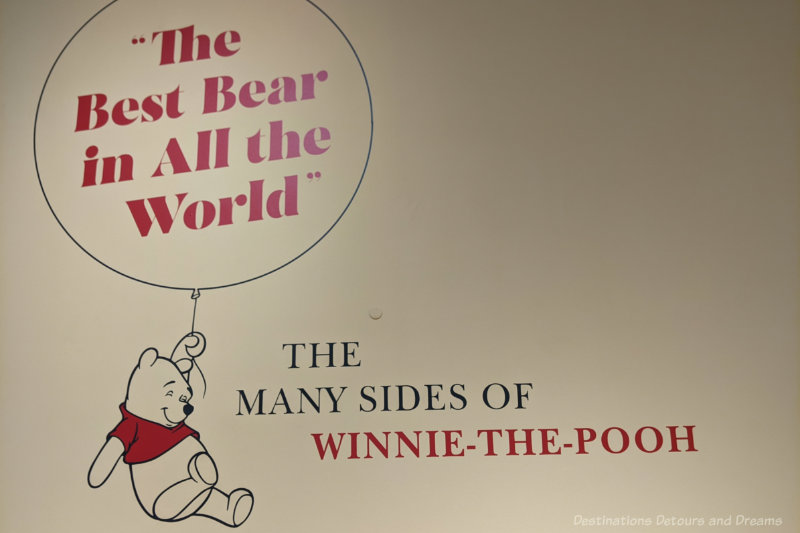
A statue and gallery honour Winnie-the-Pooh’s connection to Winnipeg, Manitoba, Canada
A statue of Lieutenant Harry Colebourn and his bear “Winnie” stands in the Nature Playground at Assiniboine Park in Winnipeg, Manitoba, Canada. The bronze statue was created by artist William Epp and unveiled in 1992.
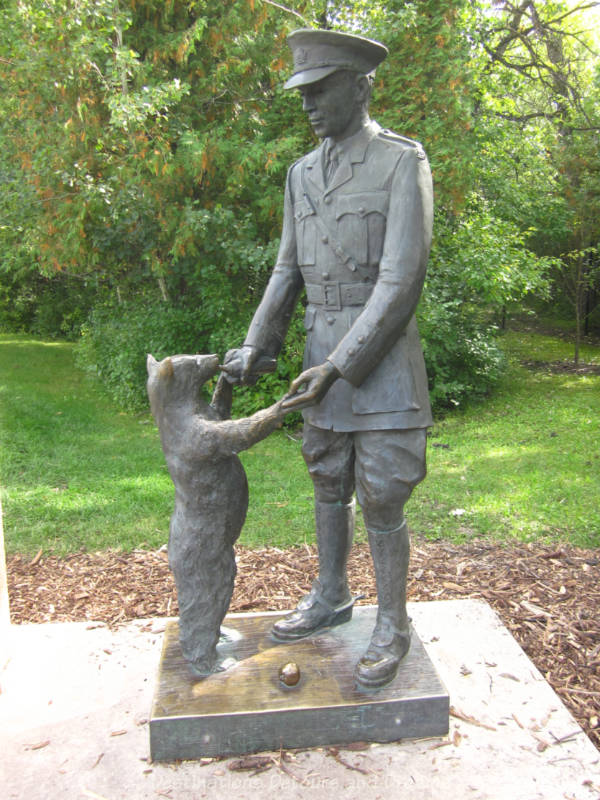
Winnie gave her name to the good-natured, honey-loving fictional bear Winnie-the-Pooh, who appeared in stories created by A.A. Milne. Four volumes containing collections of those stories were published in the 1920s.
Over the years, the Winnie-the-Pooh books have been translated into many languages. In 1961, Walt Disney Productions licensed certain film and other rights from the estate of A.A. Milne. The stories were adapted into a series of features using the unhyphenated name “Winnie the Pooh.”
Winnie-the-Pooh is also called Pooh or Pooh Bear.
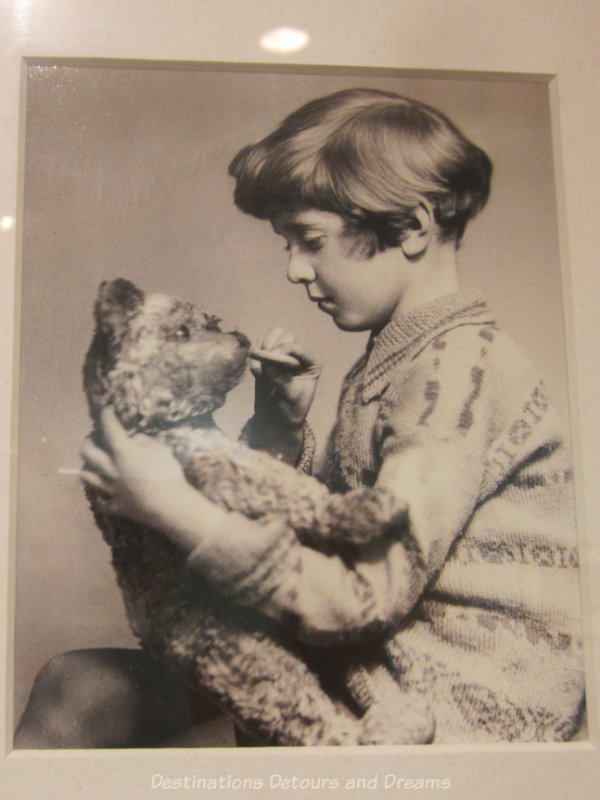
A.A. Milne’s stories were inspired by his son’s teddy bear. Milne and his son, Christopher Robin, frequently visited the London Zoo. One of the attractions at that time was a Canadian black bear named Winnie. Christopher Robin renamed his teddy bear from Edward to Winnie. The addition of Pooh to the name in the stories came from the name of a friend’s pet swan.
So, what is a statue of Winnie doing in a park in Winnipeg? Winnie, the real black bear in the London Zoo, was originally owned by Canadian Lieutenant Harry Colebourn. Colebourn named the bear after his adopted home town of Winnipeg. Colebourn, who was born in Birmingham, England in 1887, emigrated to Canada when he was 18. He received a degree in veterinary surgery in Toronto, Ontario, and then moved west to Winnipeg.
Colebourn purchased Winnie while traveling across Canada by train to a training camp in Quebec from where he would embark for overseas duty during World War I. A hunter in White River, Ontario had a female black bear cub for sale, having killed the cub’s mother. Colebourn bought the cub, named her Winnie, and took her overseas with him.
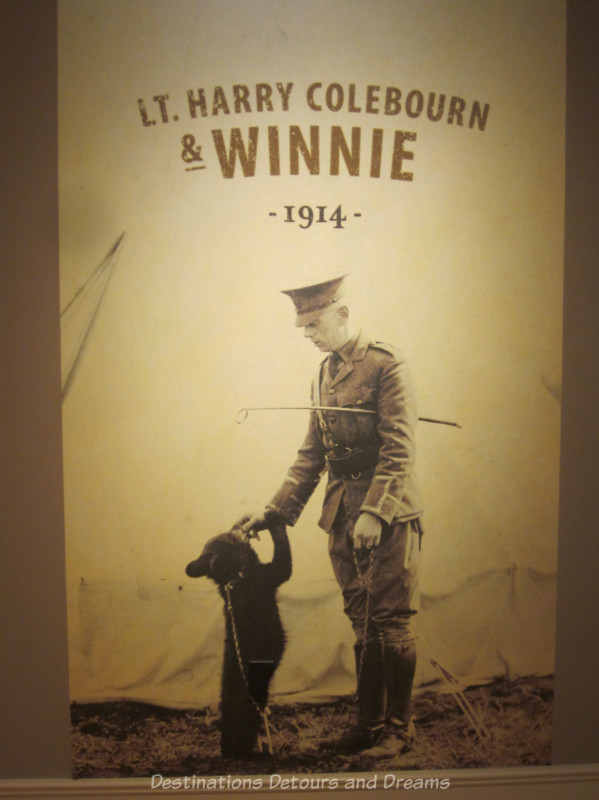
When Colebourn received news he would be sent to France, he made arrangements for the London Zoo to keep Winnie while he was away. Colebourn served three years in France and attained the rank of major. He eventually donated Winnie to the London Zoo.
After the war, Colebourn did post-graduate work at the Royal College of Veterinary Surgeons in London, England. He returned to Canada in 1920 and operated a private practice in Winnipeg. He retired in 1945 and died in 1947.
Although the real Winnie was female, Winnie-the-Pooh is referred to as “he” in Milne’s books and the voice in Disney cartoons has always been provided by a man.
Note: The Nature Playground contains various play areas, slithering slides, willow tree tunnels, colourful rubber mountains, and net bridges. It also contains the Strueber Family Children’s Garden, a whimsical mix of raised flowerbeds and creatures made of woven branches among a checkerboard grid of tree-lined pathways. Read more in my post Nature Playground.
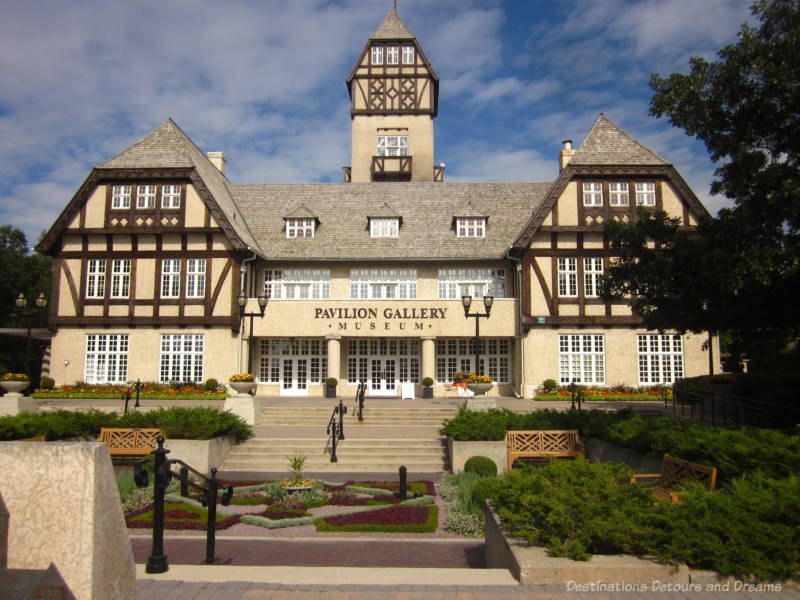
On the second floor of the Pavilion Building, located beside the Nature Playground, you’ll find the Pooh Gallery.
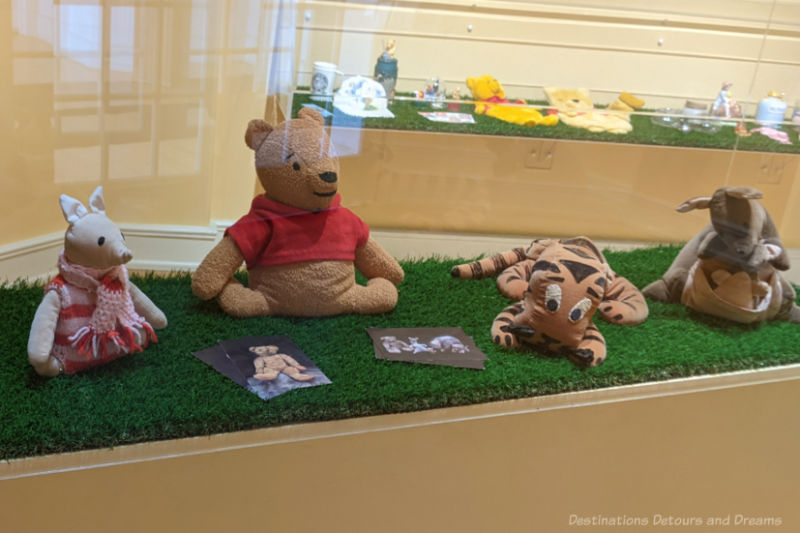
The gallery contains information about the story behind Winnie-the-Pooh, photos of Winnie and Colebourn, books, stuffed characters, and memorabilia.
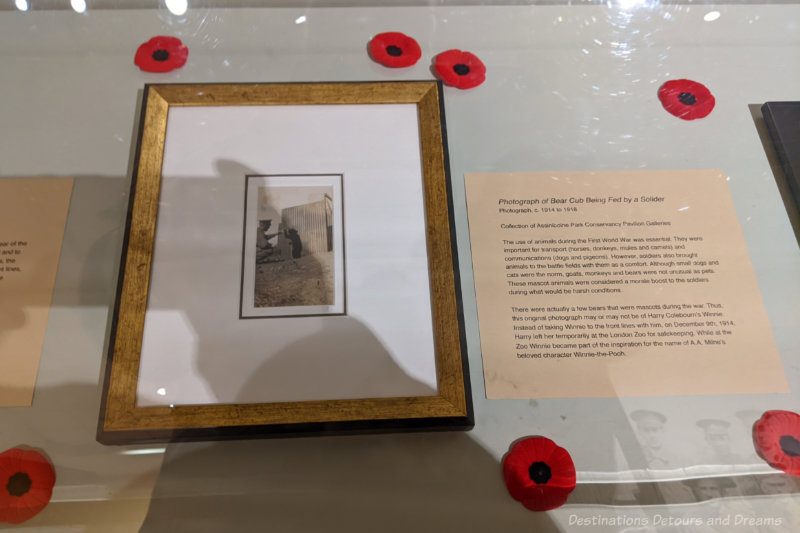
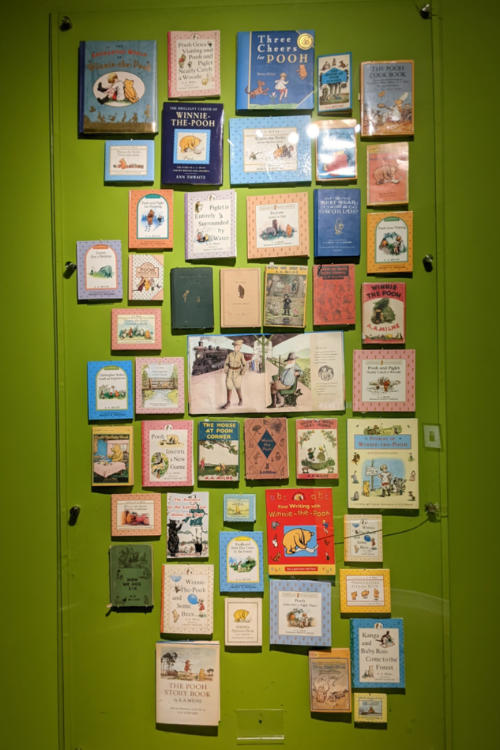
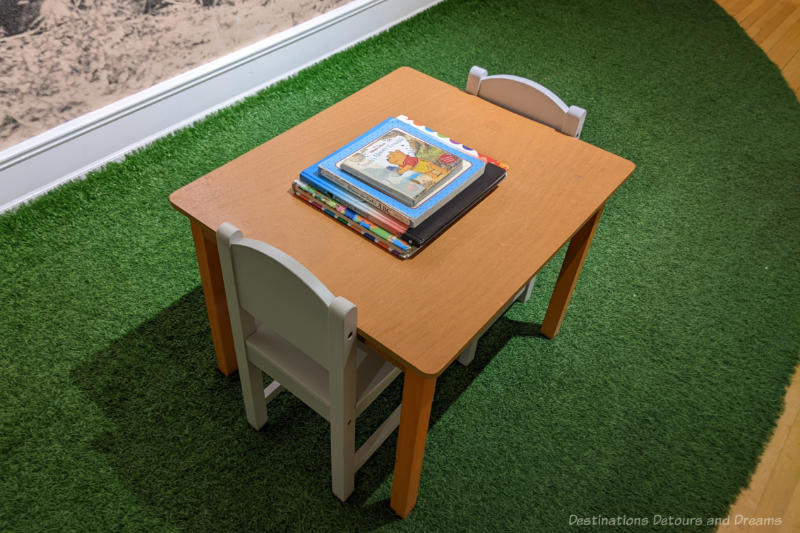
Ernest H. Shepard was the original illustrator for A.A. Milne’s books. Although Milne based his stories on Christopher Robin’s teddy bear Winnie, Shepard based his drawings on his son’s teddy bear named Growler. The Pooh Gallery contains original preparatory drawings for the Winnie-the-Pooh books. In the gallery you’ll find the painting Winnie the Pooh and the Honey Pot, the only known oil painting of Winnie created by Shepard.
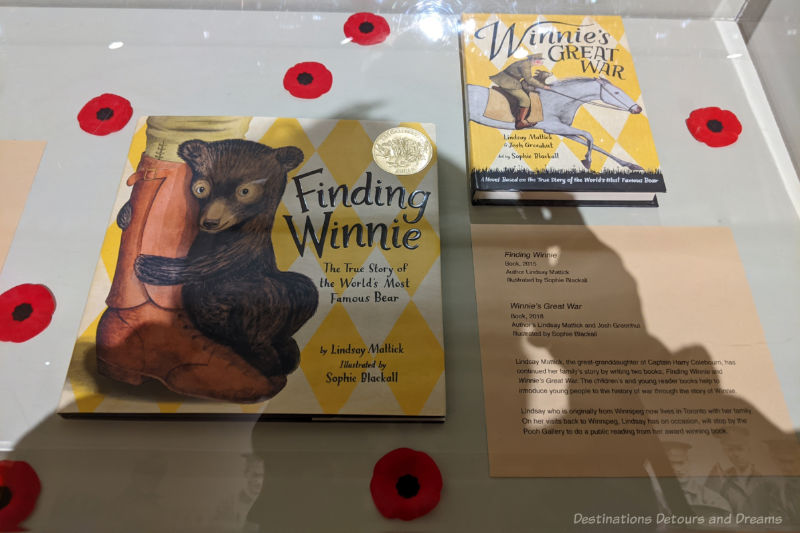
Also on display are the books Finding Winnie and Winnie’s Great War, written by Lindsay Mattick, Colebourn’s great-granddaughter and illustrated by Sophie Blackall
Pooh has uttered many quotable lines. Here are a few:
When you go after honey with a balloon, the great thing is not to let the bees know you’re coming.
A day without a friend is like a pot without a single drop of honey left inside.
Don’t underestimate the value of Doing Nothing, of just going along, listening to all the things you can’t hear, and not bothering.
How lucky I am to have something that makes saying goodbye so hard.
You can’t stay in your corner of the Forest waiting for others to come to you. You have to go to them sometimes.
The Pooh Gallery is small, but a treat for Winnie-The-Pooh fans. Admission is free. it is one of the places featured in my guide book 111 Places in Winnipeg That You Must Not Miss.
Note: The Pooh Gallery is one of the places featured in my book 111 Places in Winnipeg That You Must Not Miss.
Never miss a story. Sign up for Destinations Detours and Dreams free monthly e-newsletter and receive behind-the-scenes information and sneak peeks ahead.
PIN IT
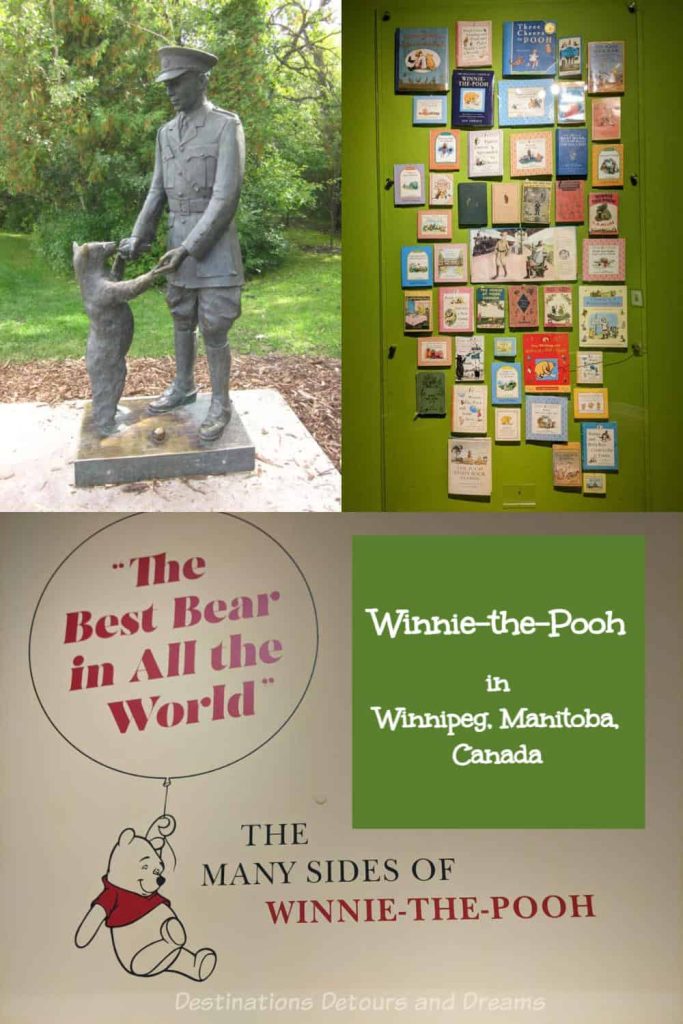

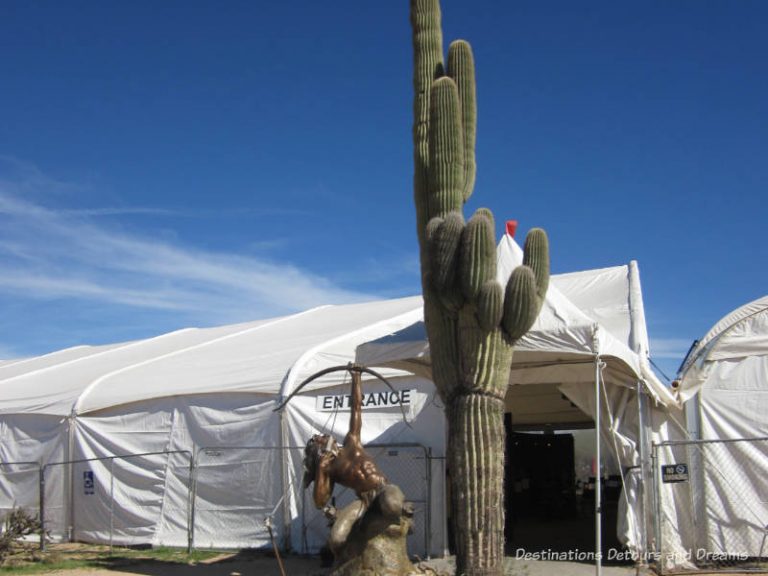
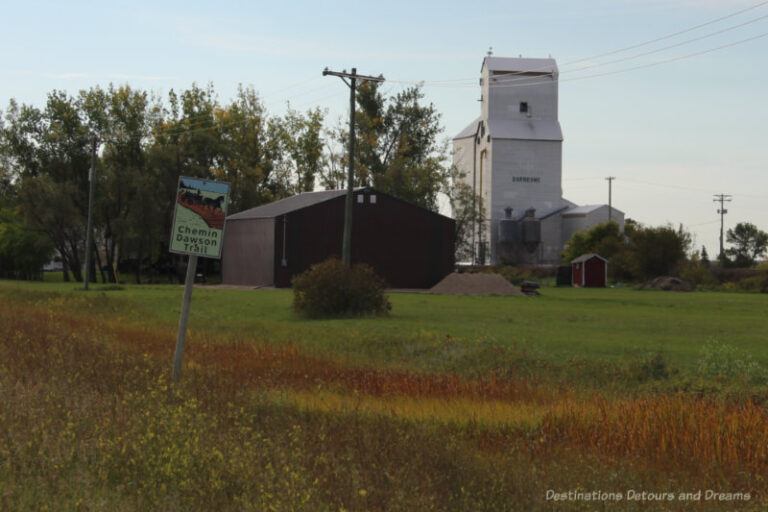
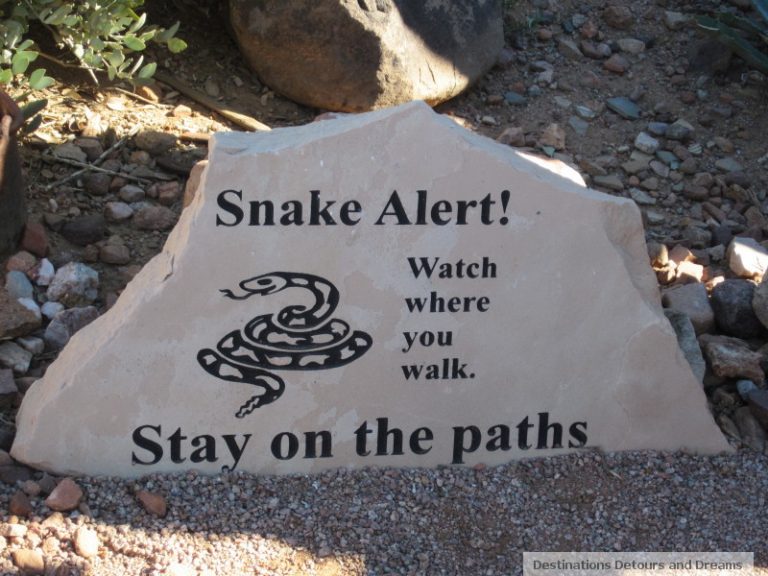
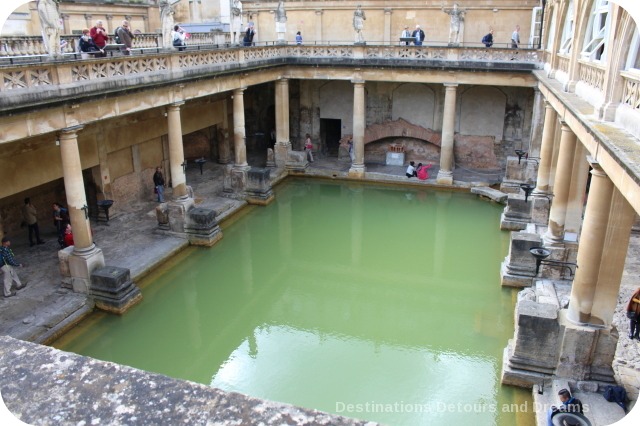
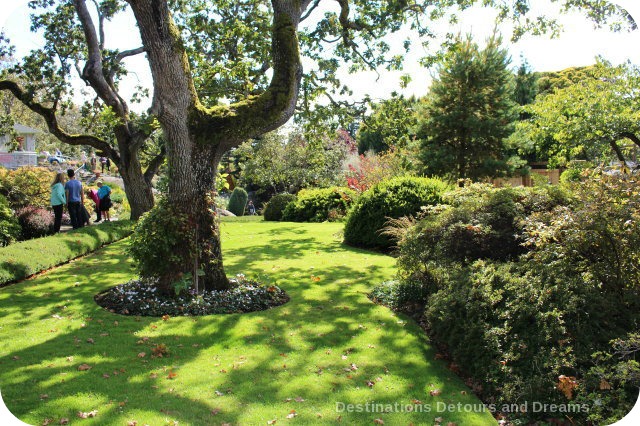
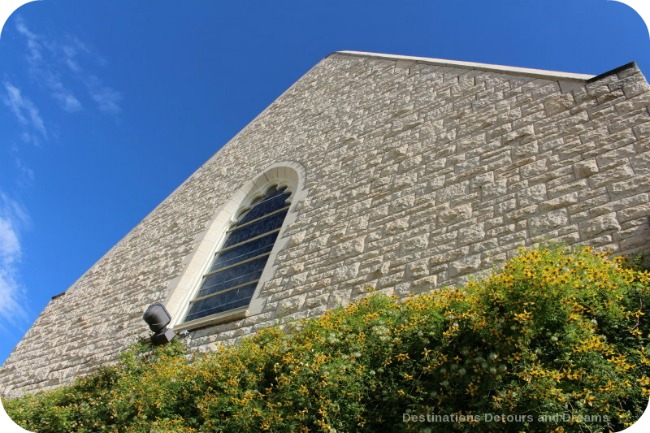
That’s a lot of Winnie-the-Pooh history!